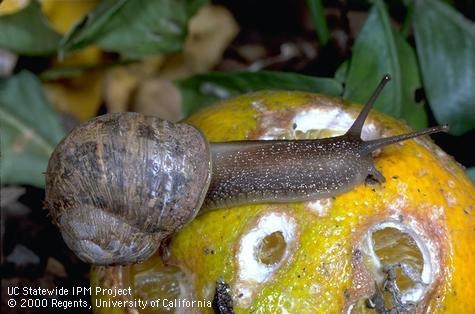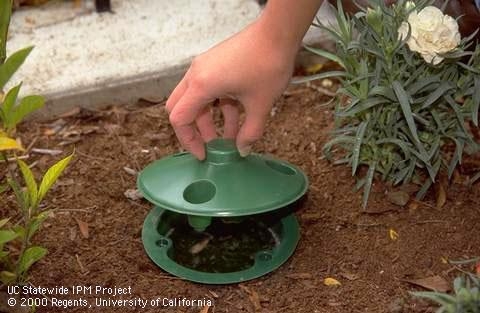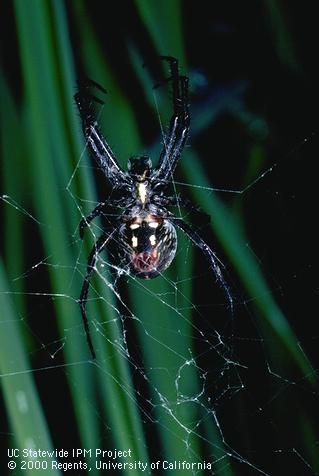Posts Tagged: spiders
Snails, slugs and spiders star in new UC IPM videos
Do you have snails and slugs chewing up your favorite garden plants? Are spiders hanging out in and around your home? How can you get rid of those pesky webs?
The UC Statewide IPM program has just released six short videos to help you find answers to these questions. Find the videos on the UC IPM YouTube channel or linked from the specific Pest Notes publications on Snails and Slugs or Spiders.
Snails and slugs chew holes in leaves and fruit of many different types of plants, but they aren’t always present when the damage is discovered. Caterpillars, earwigs, grasshoppers, weevils, and others cause similar damage. How can you identify the culprit? The short video clip “Did a snail eat my plant?” shows damage caused by various pests and can help you identify snail or slug damage by looking for their characteristic slime trails and excrement.
If you do have snails and slugs in the garden and want to control them without using pesticides, learn how to combine trapping with other nonchemical methods for best results in the clip “Trapping snails and slugs.” If you decide to use a pesticide, check out the video on ”How to apply snail and slug bait.” You’ll learn what types of baits are best, which ones to avoid, and how and when to apply them for best results.
Although many people fear them, most spiders you encounter during the day are harmless and can be beneficial in your garden and landscape by eating pest insects. You can see different kinds of spiders in the short clip “Common garden spiders.”
However beneficial they may be, you might not want them inside your home. Even though the easiest method of getting rid of a spider is to kill it, why not trap it and let it loose outdoors to eat those garden pests? “How to catch a spider” shows several ways to easily trap a spider and let it go, including two types of nifty spider catchers that catch spiders in hard-to-reach places. Now what about those sticky webs? “How to clean up spider webs” shows practical methods for removing webs from around your home such as vacuuming, sealing holes in cracks or screens, hosing them off, or using a Webster tool. These methods can also help to keep spiders out of your home.
For more information on snails, slugs, spiders, and other home and garden pests, visit the UC IPM web site.
Citizen scientists to help track brown widow spiders
Media reports now have residents around the state on the lookout for brown widow spiders, which will help a UC Riverside scientist who is trying to track its rapidly expanding range.
"Wanted dead or alive," announced an article in the Redding Record Searchlight. Reporter Laura Christman tempered the ominous lead with a succinct quote from UC Riverside staff research associate Rick Vetter, "Chill."
"It's nothing to be overly concerned about. I'm more interested from an academic standpoint," Vetter told the reporter.
A native of Africa, brown widows were established in Los Angeles, Orange and San Diego counties as of 2009, and in 2010 made their way to Riverside, San Bernardino, Ventura and Santa Barbara counties. There have been a few finds in areas further north.
Southern California Public Radio KPCC ran an interview with Vetter about brown widows on Sunday. He said the brown widow seems to be displacing black widows - a fact that has benefits and disadvantages.
The brown widow is more likely to play dead than strike out aggressively, however, they tend to congregate in larger numbers and will hang out in places black widows ignore.
"(Brown widows will) be underneath a wrought iron railing or underneath those solar powered lights that you stick in the ground on your walkway. You would never find a black widow in that much of an exposed area," Vetter told the reporter. "It just goes from people having five or six black widows to having 50 to 100 brown widows. And that’s something that you typically would not ignore."
One of Vetter's greatest concerns is a resident's tendency to use more pesticides when confronted with more spiders.
"The spiders are responsible for increasing pesticide load," Vetter said.
For more information and links to Vetter's website, see the UC ANR news release about brown widow spiders. In the 90-second video below, Vetter gives tips for identifying brown widows.
BrownWidows



